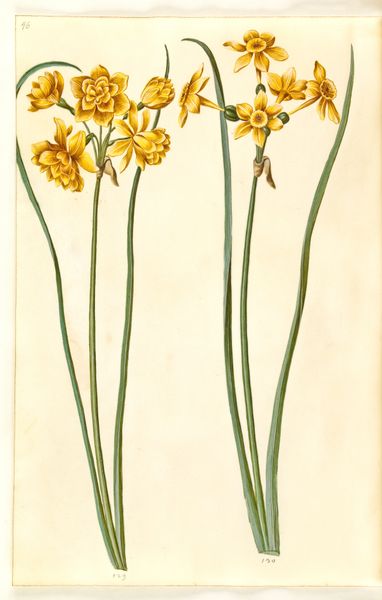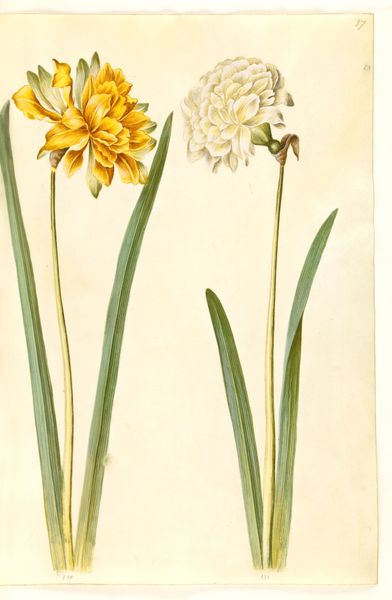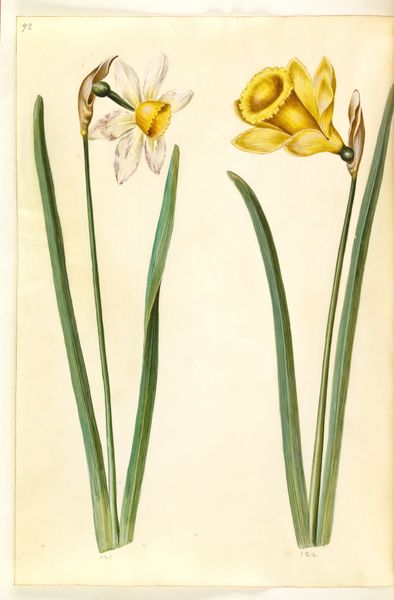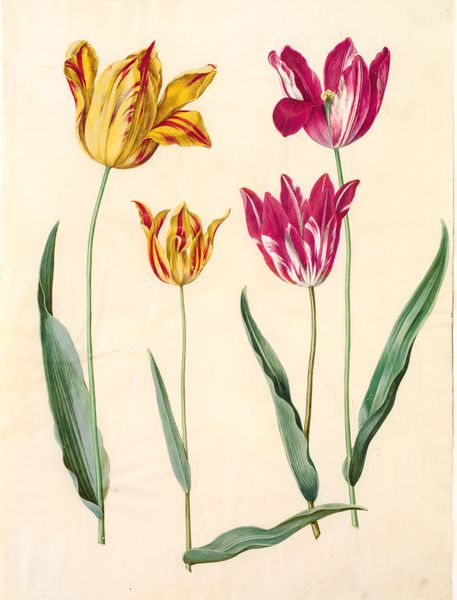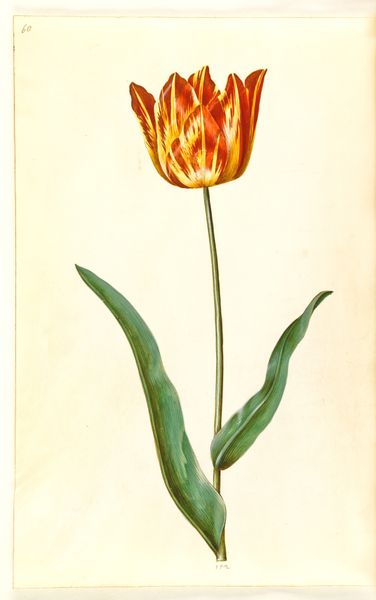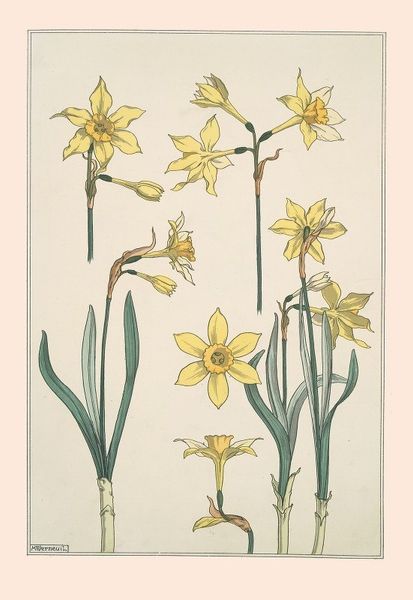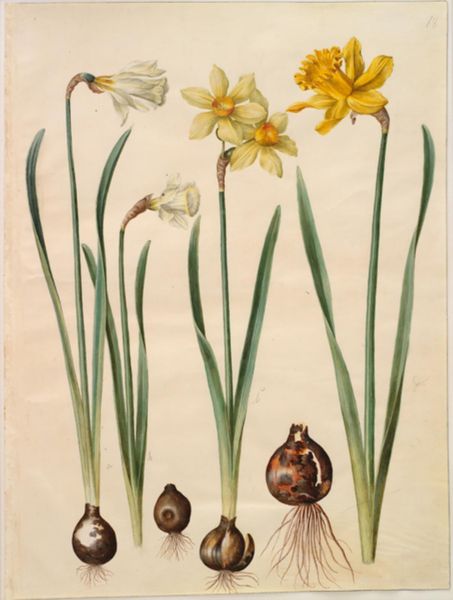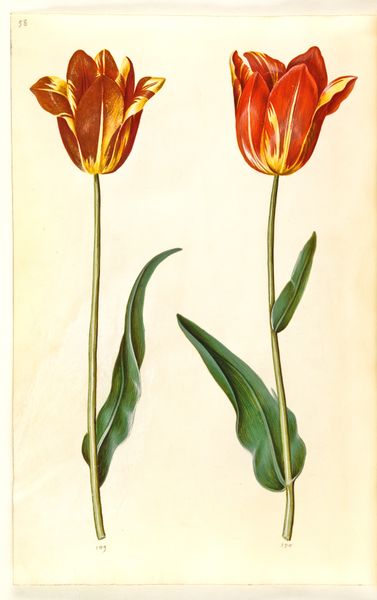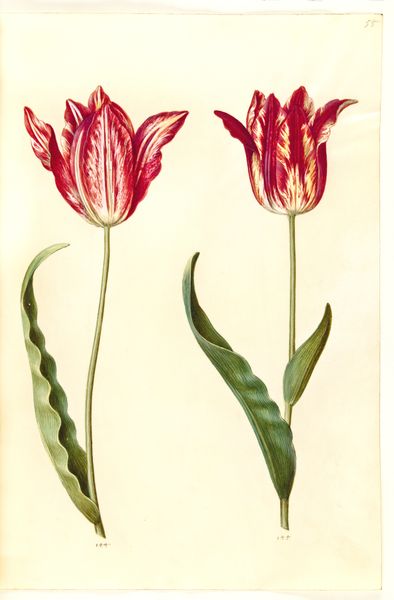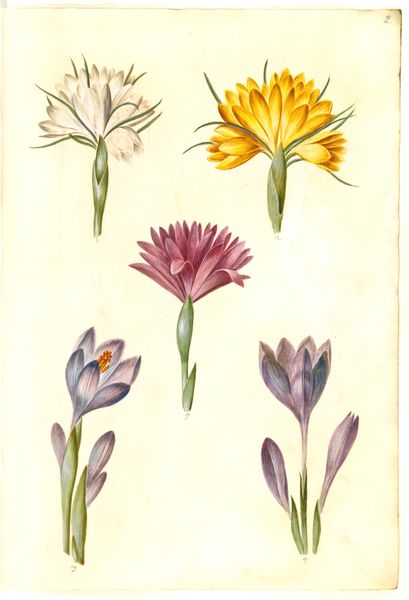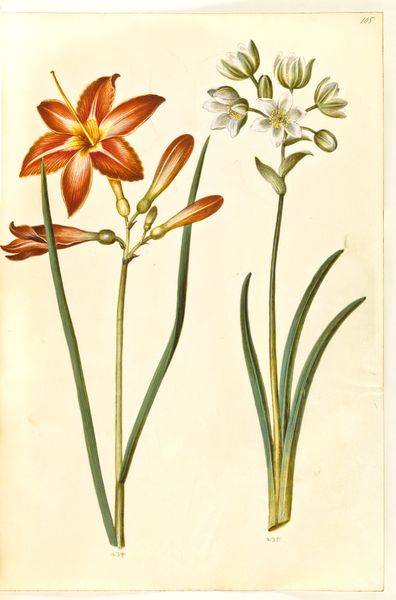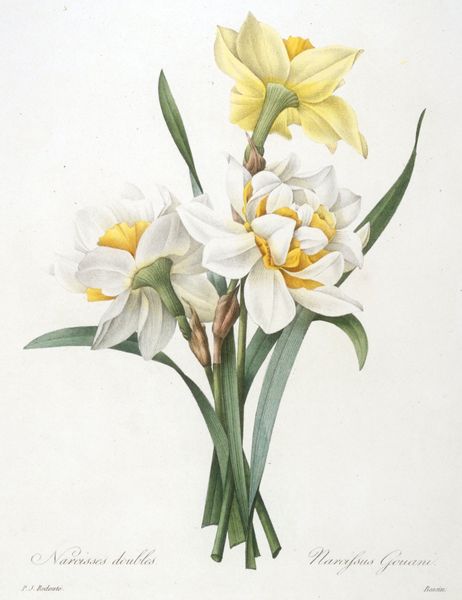
Narcissus pseudonarcissus (påskelilje); Narcissus tazetta aureus (guld-tazet) 1635 - 1664
0:00
0:00
drawing, gouache
#
drawing
#
gouache
#
botanical art
#
watercolor
Dimensions: 375 mm (height) x 265 mm (width) x 85 mm (depth) (monteringsmaal), 358 mm (height) x 250 mm (width) (bladmaal)
Editor: Here we have Hans Simon Holtzbecker’s botanical study, "Narcissus pseudonarcissus and Narcissus tazetta aureus," created sometime between 1635 and 1664, rendered in gouache and watercolor. The precision is incredible, almost scientific in its detail. What catches your eye about it? Curator: The act of rendering these flowers with such detail using gouache and watercolor transforms them into commodities, doesn’t it? Holtzbecker’s meticulous process highlights a moment when the natural world was being intensely cataloged and controlled. Who was the consumer for these drawings? Editor: I imagine wealthy patrons or apothecaries, perhaps? Something like this seems too involved for mass production, surely? Curator: Precisely. Consider the labor involved in cultivating these specific varieties of daffodils, then the artistic labor of rendering them so faithfully. It suggests a specific type of elite consumption, doesn't it? One where value is derived from both rarity and skilled craftsmanship. We have to ask, who profits from such an exchange, and whose labor remains invisible? Editor: I hadn’t considered the actual cultivation of the flowers! That adds another layer to the whole process. Were these flowers common in gardens at the time? Curator: That's exactly what makes the materialism inherent. Rarity elevated the plants' values and simultaneously added to Holtzbecker’s labor. Did his patron have to commission an elaborate and timely still life such as this as part of his collection of rare things? And in whose garden do these narcissi appear today? Editor: It’s fascinating to think about how much value was placed not just on the artwork, but on the materials themselves—the pigments, the paper, the very flowers it depicts! It really makes you consider the relationship between art, labor, and the natural world. Curator: Indeed. By looking at the material conditions of its creation, we reveal much about the social values of the time. A seemingly simple botanical study reveals the complex economics of early modern collecting and consumption.
Comments
No comments
Be the first to comment and join the conversation on the ultimate creative platform.
